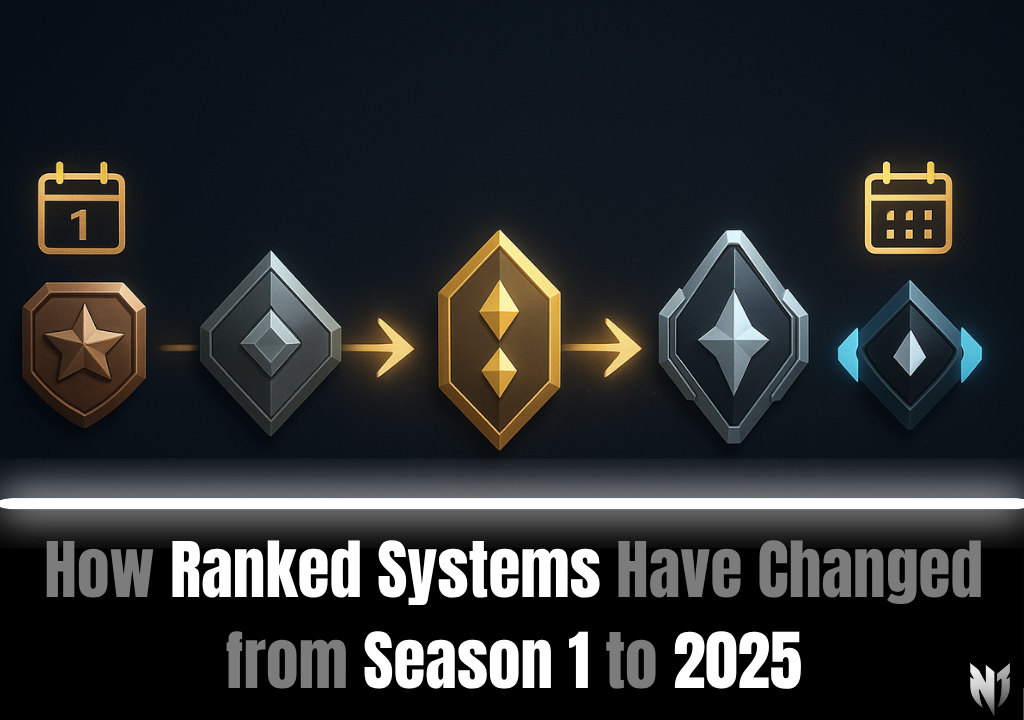

Want to know how ranked systems have changed over time? Find out how ranked play has changed the competitive gaming experience from Season 1 to 2025. Find out more at N1Boost!
The ranking systems in competitive games have improved a lot. As we get closer to 2025, it's important to look back and see how ranked play has changed since it first started. In this blog, we'll look at the big changes that have happened to ranked systems over the years and how they have affected the world of competitive gaming.
When League of Legends and Valorant first added ranked play, it was simple: players tried to move up the ranks, and matchmaking quality wasn't a big deal. In the early seasons, the system was more about the excitement of getting promoted or demoted than about fairness or balance.
In Season 1, players had to deal with fairly simple ranked systems that had fixed ranking divisions and only a few divisions per rank. It was easy to move up from Bronze to Diamond, but the systems we have now are much more complex.
Ranked systems became more complicated and advanced as the gaming industry grew. Here are some important events in the history of ranked play:
Placement matches were one of the first big changes to the ranked system. Players had to play a series of placement games to find out their starting rank for the season in games like League of Legends and Valorant. The goal of this change was to give a more accurate starting point and cut down on the annoyance of unfairly assigned initial ranks.
As games got better at their systems, they added more complicated rank divisions and tiers. League of Legends added Iron and Master ranks, and Valorant added a bunch of new competitive ranks. These changes were made to better reflect the skill levels of players and make the competition more fun.
In the last few years, ranked systems have become more flexible. Games often change their ranking algorithms and matchmaking systems. Every season, the competitive systems get big changes, like changes to balance, new features, and changes to how players are matched up in ranked play.
The addition of new rankings like Radiant in Valorant and more competitive rewards has changed how players think about and play ranked matches. These changes have made climbing more fun and rewarding, which makes ranked play feel more rewarding.
As we move into 2025, ranked systems are more advanced than they've ever been. Modern ranked systems look at things like skill-based matchmaking, win rates, performance metrics, and how players act. The goal is to make the game more fun and fair for players of all skill levels.
Players are matched more fairly based on skill these days, thanks to better matchmaking and ranking changes that help players get to their right rank faster. New features, like rewards for reaching certain goals, have made the game more interesting and kept players interested all season long.
As the esports business grows and changes, we can expect to see even more new ideas in ranked systems. Games will keep improving their matchmaking systems so that players have the most fair and rewarding experience possible. The future of ranked play looks bright, with AI-powered matchmaking and even more personalized ranking systems.
It has been an exciting journey for ranked systems to go from simple matchmaking to the complex systems we have now. Players now know better how their skills are measured and have more chances to move up in ranked play. The path to the top is full of challenges and rewards, no matter how long you've been playing ranked games.
If you want to move up in the rankings and make your competitive gaming experience even better, you might want to think about using a professional boosting service like N1Boost. Our professional boosters are here to help you reach your rank goals faster and more effectively. Go to N1Boost right now to start your path to success!
Professional boosting with No Cheats, 100% Refund Guarantee, and Trusted Boosters.